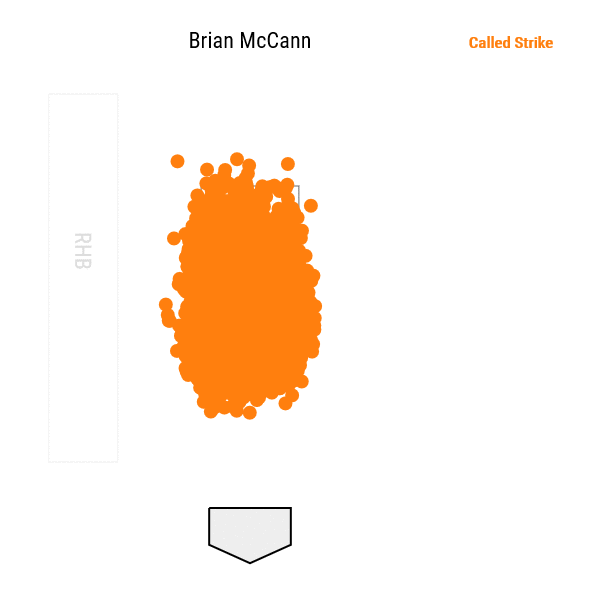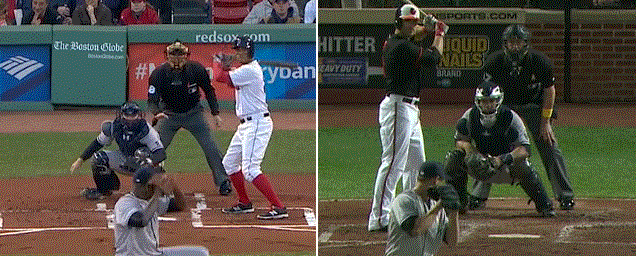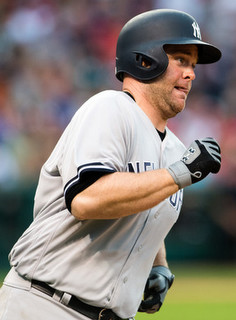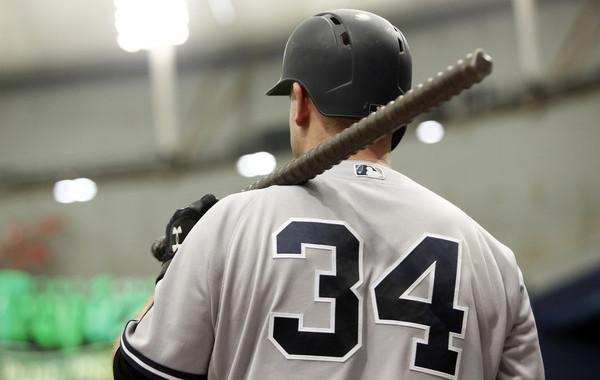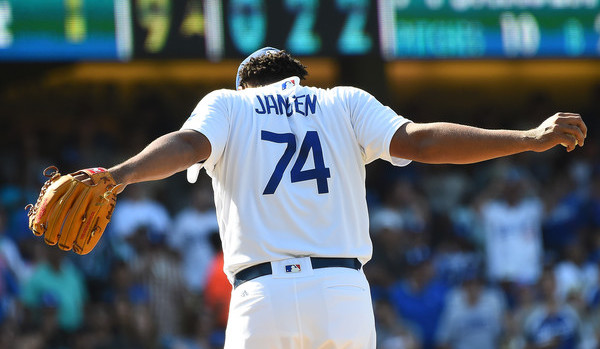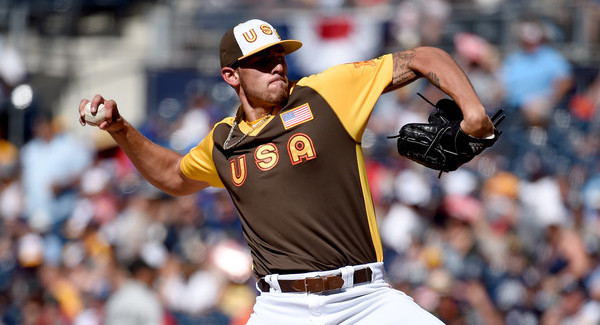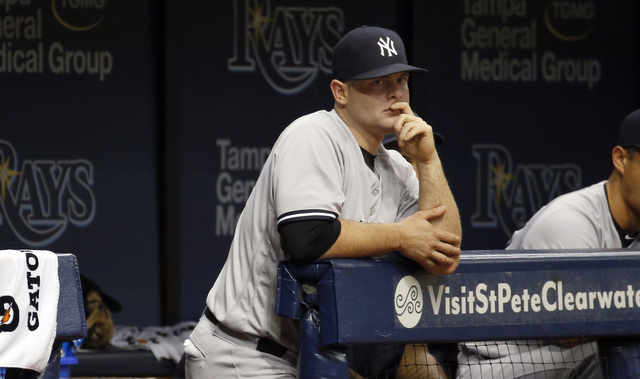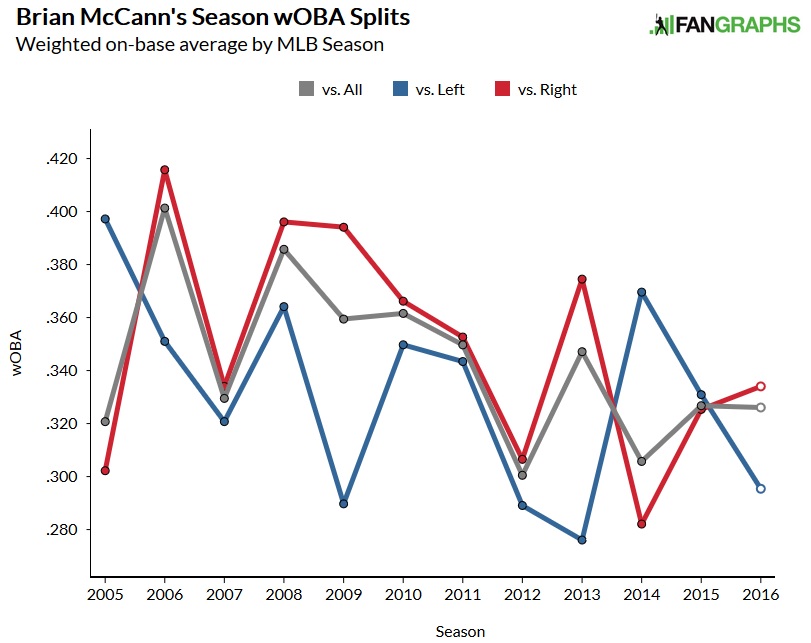
Gary Sanchez is no longer the catcher of the future. He’s the catcher of the present. The Yankees made it official earlier this offseason, when they traded Brian McCann to the Astros for two Single-A pitching prospects and salary relief. They’re handing the catching reins over to Sanchez and he’ll be the centerpiece of the youth movement.
As we saw this past season, the 24-year-old Sanchez can be a true middle of the order impact hitter. Is he going to continue producing like Babe Ruth going forward? Probably not. It’s unrealistic to expect that kind of production all the time. Especially from a catcher. But his bat has always been his calling card and the Yankees are counting on Sanchez to hit and hit big going forward.
Defensively, there have long been questions about Sanchez behind the plate. His arm is, obviously, a cannon. One of the best I’ve ever seen. There are other aspects of catching though, such as blocking balls in the dirt and general receiving, and that stuff generated questions about Sanchez’s defense. He’s improved, but as we saw in 2016, he’s still rough around the edges. That’s okay. He’s still learning.
The Yankees were among the first teams in emphasize pitch-framing — Ben Lindbergh, a former Yankees intern, wrote about the fellow intern who stumbled on the value of framing back in 2009 — which is still a relatively new phenomenon in the sabermetric world. I mean, we all know it’s a valuable skill. We just didn’t know how valuable, and really, we still don’t fully understand it. The numbers are still being refined.
McCann came to the Yankees with a reputation for being a top notch pitch-framer, a reputation he maintained throughout his time in New York. Sanchez? Well, we don’t know too much about his pitch-framing skills yet because he just got to the big leagues. Minor league pitch-framing data exists, but it’s even more dubious than Major League numbers. Here are McCann’s and Sanchez’s 2016 pitch-framing numbers (MLB only for Sanchez):
McCann per StatCorner: +0.51 calls per game
McCann per Baseball Prospectus: +1.84 runs per 1,000 chances
Sanchez per StatCorner: -0.15 calls per game
Sanchez per Baseball Prospectus: +0.73 runs per 1,000 chances
On a rate basis, McCann is a better pitch-framer than Sanchez and not by a small margin either. Both StatCorner and Baseball Prospectus rate McCann as one of the top framers in the game. Sanchez is closer to middle of the pack. Not terrible, not great. Just … average-ish.
Let’s try to visualize the difference between McCann’s pitch-framing and Sanchez’s pitch-framing. With an assist from Baseball Savant, here are all the called strikes with McCann behind the plate this season and all the called strikes with Sanchez behind the plate. Again, this is MLB only for Sanchez. I created a GIF and overlaid the strike zone plots to make the comparison easier:
Do you see the difference? McCann’s strike zone is a little wider on the edges of the plate, though I suspect that might have as much to do with sample size as it does his framing ability. The bottom of the strike zone is what really caught my attention. Based on the data, Sanchez didn’t get nearly as many called strikes at (or below) the knees as McCann.
Framing a borderline pitch requires good technique as much as it does hand and wrist strength. The catcher has to receive the pitch, hold it firm, and subtly pull it into the strike zone as necessary. Too much movement is a bad thing. Here are McCann and Sanchez framing two fastballs in the same spot. McCann, on the left, got the strike. Sanchez didn’t.
Again, those fastballs are in the same spot — the coordinates are damn near identical, per PitchFX — yet McCann got the call and Sanchez did not. Sure, we could blame the umpire for missing the borderline call, but look how the two catchers frame that pitch. McCann receives it nice and quietly. Sanchez stabbed down with a big recoil to get back into the strike zone. He didn’t present it well for the umpire. McCann did.
The numbers and the eye test both indicate McCann is a better pitch-framer than Sanchez. Exactly how much better? That’s up for debate. I don’t think framing metrics are accurate enough to give us exact runs saved values myself, but to each his own. Either way, McCann is a better framer than Sanchez, and that’s going to affect the pitching staff going forward. The Yankees figure to get fewer borderline calls next year, particularly on pitches down in the zone.
Framing seems to be one of those things that can be taught, though maybe only to a point. At the end of the day, it’s an athletic move that requires a certain level of strength and athleticism and reflexes. Some have it, some don’t. If it could be easily taught, everyone would do it. The Yankees clearly value pitch-framing and I’m certain they’ll have Sanchez work on it going forward. Tony Pena and Joe Girardi are two pretty good catching mentors, I’d say.
Pitch-framing is a very real skill that does impact the pitching staff. The Yankees are poised to go young at the back of the rotation, and turning a few extra borderline pitches into strikes could be a big help. McCann’s advantage in framing might not be enough to make up for Sanchez’s advantage in, well, everything else, but when it comes to getting those borderline calls, it appears the Yankees will be worse off next season.
